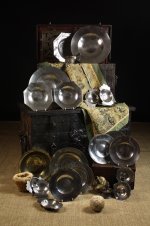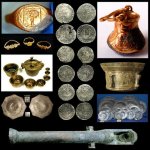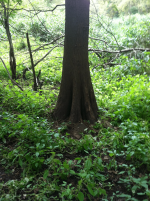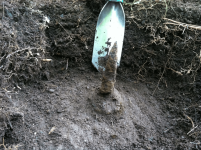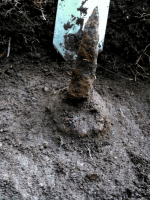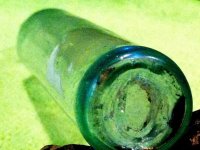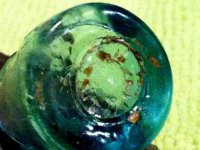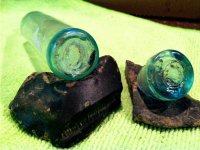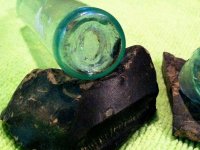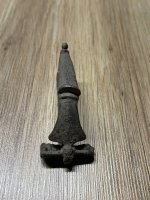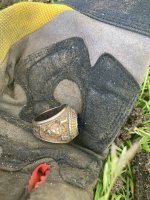Black Duck
Sr. Member
[email protected] Cell: 772-205-8184 – www.gmexploration.com
In 2011 Off Punta Cana Dominican Republic ARS/GME finds a shipwreck with the largest catch of pewter in history, Robert Pritchett through his own research later finds that the gold ring has the coat of Arms of the new Lt. Governor of Cuba on it. In 2013-2015 Pritchett found an entre in the Seville et Atlantique 1504-1650, The year was 1555, the ship, San Aton, Captain Alonso Martin Morejon, Nao, 220 ton ship, Anchors found on site confirm tonnage of the ship.
Based on dates from the coins recovered, maker’s stamps on the fine pewter ware and the overall high-quality of artifacts recovered. Couple that with actual testimony matching artifacts recovered and the story begins to become clear. This was also listed as a merchant ship.
In March of 1555, the king of Spain dispatched a ship to carry the new governor and
vice-governor of Cuba to the new world. Diego de Mazariegos Mazariadas was to become the governor, and Juan Martinez was to be his vice governor. Both men loaded their possessions and families onto the vessel and set sail for the Americas. It is well documented that they were shipwrecked, and Mazariegos survived the wreck, but Martinez and his family were not so fortunate. The name of the ship and the place of wrecking were not recorded in any documents that our researchers found on the subject, but some very important clues were left behind in the other documents that we did locate.
The ship was supposed to leave much earlier in the year, but was delayed because both men had to gather the housewares they would need to furnish their new world governors mansions. They would have to carry the full complement of items they would need to perform their duties as governors of the Spanish colony of Cuba.
The artifacts recovered to date from the Punta Cana Pewter Wreck fit this requirement more than perfectly. Thesheer volume of ornately decorated items, service bells for summoning servants, fine tableware and other niceties not affordable by most new world residents makes it unlikely that this ship was carrying goods to be sold. It is much more likely that these items were the personal belongings of some wealthy and important travelers heading to the new world.
One of the main reasons Mazariegos was appointed was his skill in mining, and his duties included mining for precious metals in his new land. He was outfitted by the king to perform this task with pick axes and other digging tools, nesting weight sets for weighing the precious metals and the weaponry to protect it. There are many tools required for the processes involved in precious metal extraction and we have found all of these tools on this wreck.
Other items like ornate mortar and pestle sets, decorated ink wells, golden rings with wax-seal stamps in them and several sets of the finest English pewter table-ware of the day also indicate that very important and wealthy people were on board. Mazariegos stated before he left that he had packed 4 crossbows and several harquebuses to help him defend himself and any treasures he might find. We have found 4 crossbows and several harquebus parts on this wreck as well. When you add all of the evidence together, it tells a compelling story that leads our researchers to believe that we have found the ship carrying these men to their posts in Cuba. All artifacts date to the exact time period of Mazariegos’ voyage, everything known to have been aboard his ship has been found and all of the items that we know he would have been carrying to accomplish his duties in the new world are there as well.
Four cross bows, four arquebuses, Coat of mail ( Suit of armer of sorts) slave bracelets as they had 3 slaves on board, A women’s wedding ring as well as other gold rings, all was on their list of personal belongings. The Picks for mining, and nested weights for weighing gold they would have used to mine gold as this is one reason they were sent to Cuba, we also found gold plated stirrups for a horse’s saddle, certainly only for such a person as a governor or other high command.
There was a gold ring found with a Tree of life with a shield around it and possible Initials of M suggest that this was Juan Martinez Ring with his coat of arms.
There were only a few documented wrecks during this time, and all of the others have been located or at least accounted for by historical documents. The only missing wreck in this area from this time period is the one carrying Mazariegos and Martinez. The exact match of cargo and dates on the artifacts leaves us with only one logical conclusion about the identity of this wreck.
Another point is they left Spain in Summer of 1555, Diego Mazariegoes did not get to Havana until March of 1556. If it took them 60 days or even 90 days to get to Punta Cana, that would be at worse case end of Nov, 1555. That would give him 4-6 months to get to Havana. We also found what I think is the best piece of history of all, a kids piggy bank and they had children on board.
The piggy bank originated in the Middle Ages, when pots and other containers, including those used to hold money, were usually forged from an orange-colored clay material called pygg. Over time, money jars became known as “pygg pots
Research by: Robert H Pritchett III


